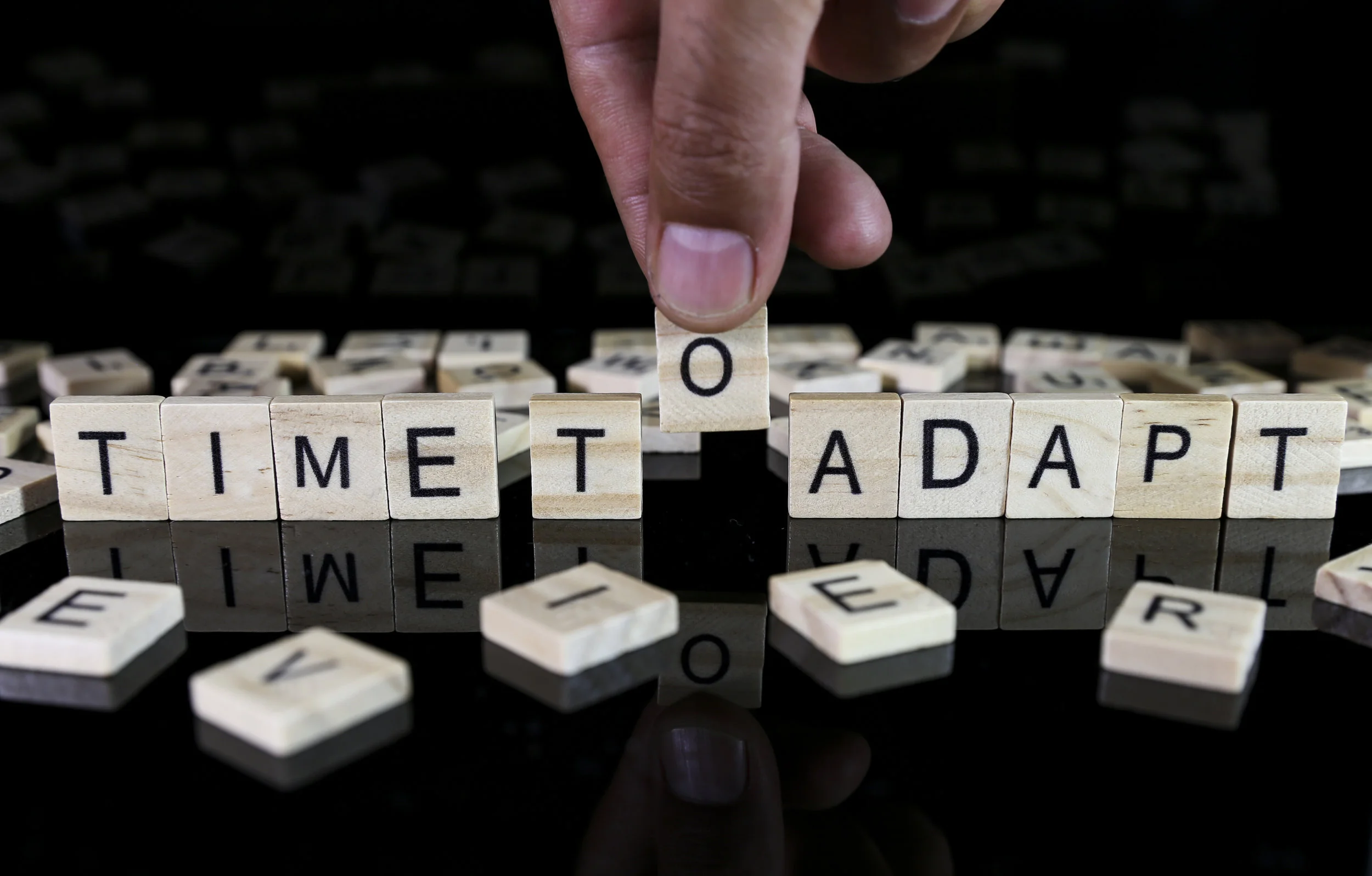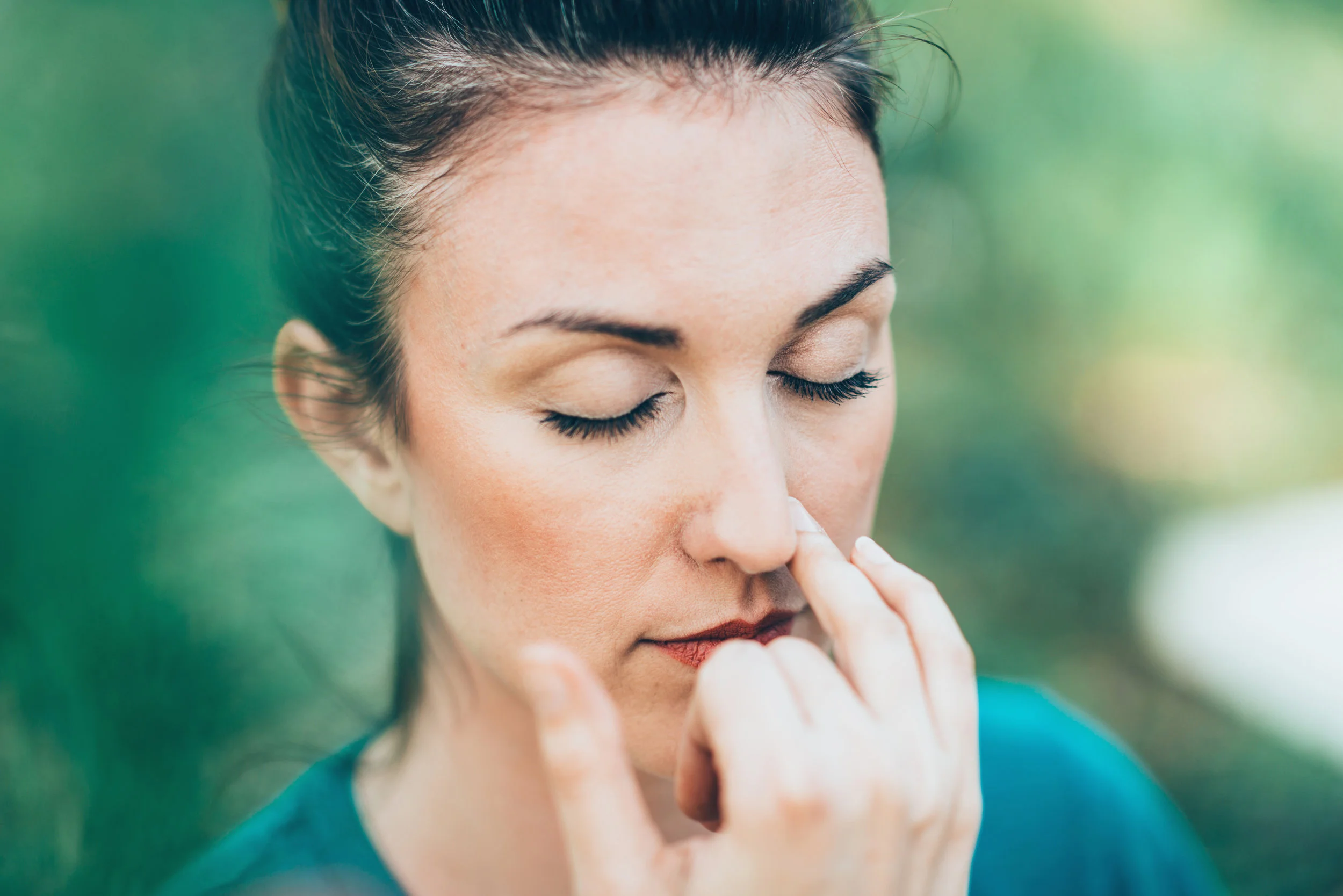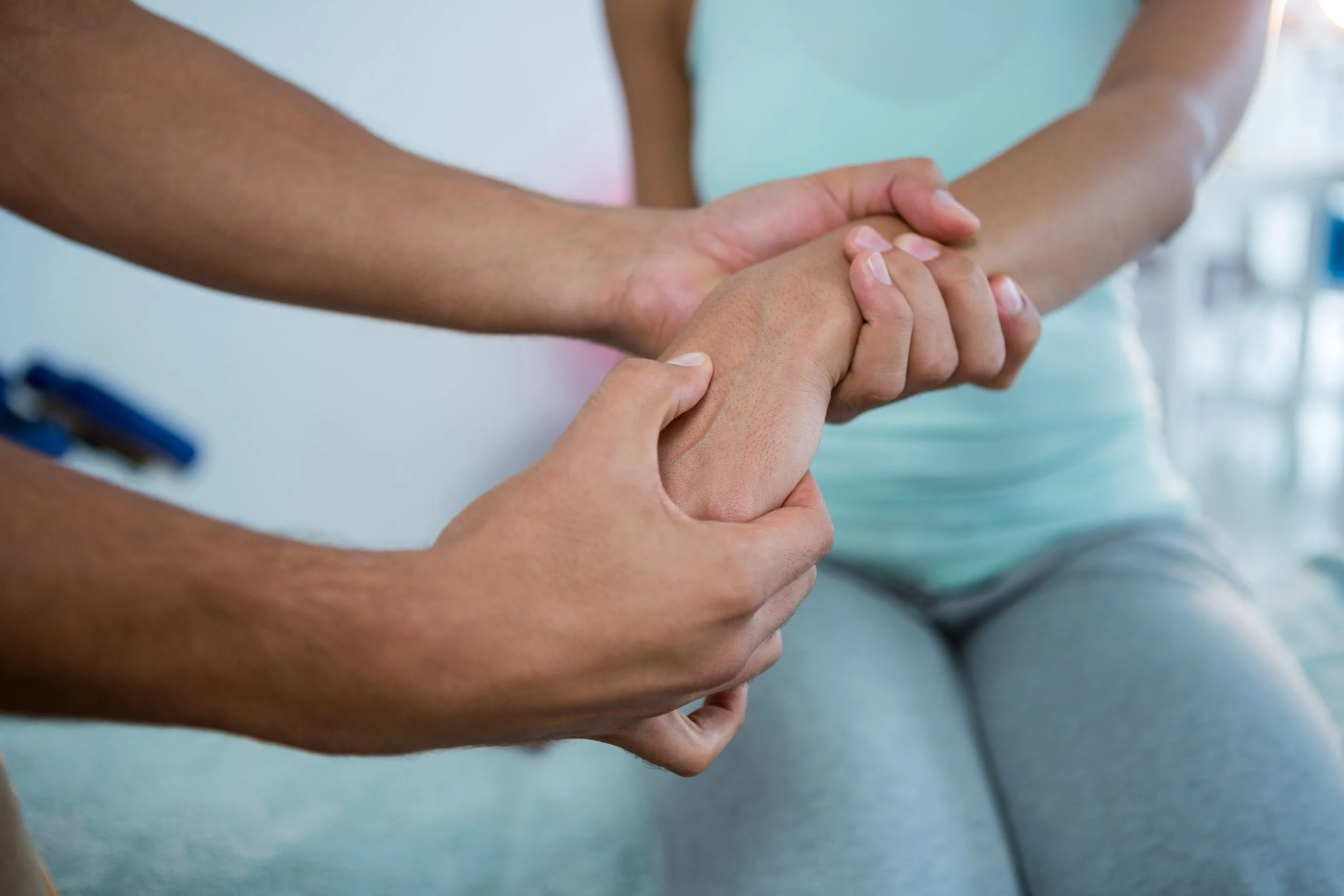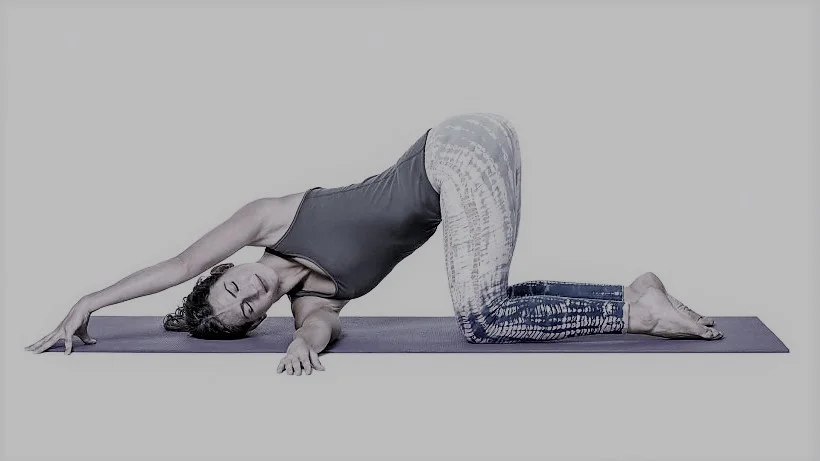Yoga to Improve Posture: Self-Assess Your Spine + Learn How to Protect It
/Your mom was right: You'll look better and feel great if you stop slouching and stand up straight. Yoga can help you do just that — in a way that honors your spine's natural curves. Here's a guide to assess and improve your posture.
Are you a slumper? A swayer? Chances are you're one or the other to some degree—despite Mom's best efforts all those years ago to get you to sit up straight and stop slouching. She probably told you that you'd look and feel better if you worked on your posture, and she was absolutely right. But if you're like most people, you rolled your eyes and ignored her, or straightened up until she wasn't looking. And you probably didn't give posture much more thought at all until you walked into your first yoga class and tried to stand in Tadasana (Mountain Pose).
When you're a beginner, it's surprisingly complicated to master the art of rooting down through the feet while lengthening up through the spine, keeping your chest open without jutting your lower ribs out, and keeping the legs muscles strong and lifted without tensing the belly or jaw. But ultimately, Tadasana demands just one simple thing: that you stand in a way that supports the natural curves of a healthy spine. So why is it so difficult? And why do we work so hard to master good posture in yoga—leaving class feeling taller and healthier—only to slump down in the car seat on the way home or revert to a swayback when we heft our overstuffed yoga bags onto our backs?
In short, modern life conspires against good posture. We spend our days sitting at desks, staring at computer screens. When we travel, we do it in cars or—worse—airplanes. We lounge around in overstuffed chairs designed more for looks than for lumbar support. And we pay people to mow our lawns, tend our gardens, and remove our trash so we can spend more time working or driving or sitting. Non-sedentary cultures—with a few exceptions—don't have the same epidemic of back and neck problems that we do. Picture a woman gracefully balancing a large basket of food on her head. To carry such a heavy weight, she must have a perfectly aligned spine and strong posture-support muscles. You don't get that kind of alignment and strength from sitting around and watching the tube. You can, however, get it from a regular yoga practice.
See also Stop Slouching! Improve Posture with Bow Pose
Better Posture Principles: Try this 3-Part Strategy
To create great alignment for your body, I recommend a three-part strategy. First, build awareness by assessing your posture and your lifestyle. Next, create a yoga prescription for your specific postural problem by incorporating a few simple poses into your regular practice. Finally, take your newly developed awareness of your alignment issues and apply it throughout your daily life.
Before tackling the how-tos, however, it's important to understand the anatomy of proper posture. Whether you're sitting or standing, your spine has natural curves that should be maintained. They are a mild forward curve (like a gentle backbend) in the neck and lower back, and a mild backward curve in the upper back and midback. As you practice yoga, you learn to maintain these optimal curves in many standing poses, in most sitting poses, and in inversions like Sirsasana (Headstand) and Adho Mukha Vrksasana (Handstand).
If any of these curves are habitually flattened or overly curved, abnormal posture can get locked into the body. A wide variety of abnormal curves can occur, including a flat neck and a flat lower back, but we'll focus on the two most common problems: a hunched upper back (known as excessive kyphosis), which is usually linked with a jutting forward of the head (known as forward head) and, at the other end of the spectrum, an extreme sway in the lower back (known as excessive lordosis). These extreme curves contribute to many of the painful problems—muscle strain, joint pain, and disk problems, to name a few—that physical therapists and other health care practitioners treat every day.
Maintaining just the right curves is only part of the equation, however; to function efficiently, your skeletal structure also needs to be aligned vertically. That means when you're standing, your ears should be over your shoulders, your shoulders over your hips, and your hips over your knees and ankles. When any body part falls out of that vertical line, the adjacent support muscles will feel the strain. For example, years of having a forward head will cause the muscles of the upper back and neck to become tired and achy from holding up the weight of the head against the pull of gravity.
So, while you needn't nag yourself about slouching, you may discover that the simple act of straightening up can change your life. If you train your body to maintain the normal spinal curves and keep your posture vertical and spacious when you're standing or sitting upright, you're likely to feel better all over. And that's something to write home about.
See also Kathryn Budig’s Perfect-Posture Secret: Anti-Slouch Yoga Strap Trick
Do You Slump or Sway? Take the Assessment
The first step toward changing a bad habit is to recognize that you have a problem, right? So, let's start your posture-improvement program by building awareness of your postural pitfalls. You can assess your spinal curves by standing against a doorjamb. When you stand with your heels very near the jamb, you should have contact at your sacrum (the upside-down triangular-shape bone a few inches above your tailbone), the middle and upper back (thoracic spine), and the back of your head. With normal spinal curves, your lower back (lumbar spine) and neck (cervical spine) won't touch—there should be about an inch of space between the doorjamb and the vertebrae of your lower back. But if you can slide your whole hand into the space, you have a swayback, or excessive lordosis.
Standing at the doorjamb also provides valuable feedback about kyphosis and forward head. If you notice that your chin lifts up when you place the back of your head against the jamb, you probably have excessive kyphosis in your thoracic spine. The combination of excessive kyphosis and forward head is common, and it puts significant strain on your neck muscles and intervertebral disks.
It's also worth noting that you could have a combination of postural problems, such as an increased kyphosis with an excessive lordosis. In that case, it's usually best to focus on creating proper alignment in the pelvis and lower back first, and then work your way up the spine.
After your assessment, take a close look at the furniture you use every day at work, home, school—anyplace you spend a significant amount of time. Supportive beds and chairs and a carefully set-up desk and computer workstation will facilitate good alignment. On the other hand, a saggy bed, poorly designed chair, and keyboard at the wrong height will set the stage for degenerating posture. Make the best furniture choices you can to support your journey to better spinal health.
Better Posture Poses for Yogis with Desk Jobs
While sitting is not the root of all evil, it does contribute to both kyphosis and lordosis. Most people unwittingly tip their head forward and down while working—to see the papers on their desk or read what's on their computer screen. Often the arms also pull forward to reach the keyboard. It's easy to see how this contributes to a sagging, droopy posture.
When you hunch forward at your desk, the chest collapses and compresses the heart, lungs, and diaphragm. Hunching also strains the back muscles, causing them to overstretch and become weak. If you're collapsed in a kyphosis, the key to breaking the habit is to stretch the muscles of the chest, increase the flexibility of the thoracic spine and ribs, and strengthen and shorten the muscles of the back. Supported backbends stretch the pectoralis major, so they're an excellent way to open the chest. They also increase the mobility in the stiffest part of the spine—the thoracic.
To strengthen and shorten the muscles that support the midback, practice Salabhasana (Locust Pose) and Bhujangasana (Cobra Pose). Both are effective strengtheners for the long muscles that run parallel to the spine along with the muscles that help support and position the shoulder blades (the trapezius and rhomboids in particular). In a slumped posture, the shoulder blades usually fall forward toward the chest and hunch up toward the ears. Both Bhujangasana and Salabhasana train the midback to hold the shoulder blades in their normal position, which is down away from the ears and flat against the back ribs.
See alsoFix the Slouch: 4 Poses for Upper Crossed Syndrome
Sitting all day can also contribute to serious misalignments in the lower back and pelvis. Prolonged sitting shortens the hip flexors—the muscles (including the iliopsoas, rectus femoris, and tensor fascia lata, to name just a few) that cross the front of the hip. If you sit for many hours every day without stretching your hip flexors regularly, they will gradually lose their normal length, causing the pelvis to tilt forward (known as an anterior tilt of the pelvis) when you're standing. A strong anterior tilt usually causes an excessive lordosis or swayback, which contributes to chronic tightness and pain in the lower back muscles. It can also cause lower back pain by compressing the facet joints, the small joints along each side of the spine where the vertebrae overlap one another. The facet joints weren't designed to bear much weight, and compression can wear away the cartilage lining the joints, causing arthritis. Unfortunately, you may not know that your cartilage is wearing away until, after many years of sitting, standing, and walking with excessive lordosis, you find yourself living with a chronically painful arthritic lower back.
See alsoFix the Slump: 4 Poses for Lower Crossed Syndrome
If you fall into the swayback category, focus on lengthening and stretching those tight hip flexors in your yoga practice. Add lunges and Virabhadrasana I (Warrior Pose I) to your daily practice or, at the very least, do them two or three times per week. You can, of course, include this stretching as part of Sun Salutation, but it's optimal to hold the hip flexors in a stretched position for one to two minutes. Try adding a good long hip flexor stretch later in your practice, when the muscles are warm, and focus on breathing, relaxing, and lengthening the muscles that cross the front of the hip.
Also, practice a posterior tilt by lifting the front pelvis up off the front thigh and drawing your tailbone down toward the floor in lunges or Virabhadrasana I. This action will create space and release compression in the facet joints in your lower back.
In addition to practicing these actions, you can reduce the anterior tilt of the pelvis, support your internal organs, and help reduce the risk of lower back injuries by strengthening the abdominals. Exercises like curl-ups and crunches emphasize the upper abdominals. But if the upper abdominals become overly strong and tight, they can restrict breathing and actually pull down on the rib cage, contributing to an increased kyphosis and flattening the normal curve of the lower back. Instead, practice postures like Navasana (Boat Pose) and Urdhva Prasarita Padasana (Leg Lifts) to strengthen the lower abdominals, which are most important in supporting the lower back and pelvis.
See alsoThe Yoga of Smartphones: How to Avoid “Tech Neck”
Daily Yoga Practice for Better Posture: Virasana
Whether your problem area is the upper back, lower back, or both, I recommend that you sit for a few minutes once or twice a day in Virasana (Hero Pose). It is a wonderful position to reinforce good posture habits, because it teaches proper alignment in all the spine's curves. After a brief daily Virasana practice, you can more easily integrate your alignment awareness when you sit during the day. Just remember to apply the same cues you learn in Virasana when you sit on your couch or at your desk.
After you get settled in Virasana, place one hand on your lower back. Now tuck your tailbone under—you'll actually be sitting on it. As you do this, feel how you slump over and your lumbar spine flattens. Now move in the opposite direction by rolling your pubic bone toward the floor. Your pelvis will tip forward and you'll have excessive lumbar lordosis, which you can also feel with your hand. Now move back and forth between those two extremes until you find the point balanced in between, where you can sit directly on your sitting bones and feel a healthy alignment for your pelvis and lower back.
Next, bring your awareness to your upper back. To reduce kyphosis, imagine lifting your breastbone up away from your heart and lungs as you engage your back muscles to lengthen your spine upward. As you lift up, don't increase the curve of the lower back or let your lower front ribs jut forward. Let the shoulder blades fall away from the ears, and spread your collarbones broadly without pinching the shoulder blades toward the back spine.
Moving farther up the spine, make sure you don't have a forward head. I don't recommend that people with a forward head put a finger on their chin and push their head back, because doing so can create an overly flattened, uncomfortable neck. Usually, just reducing the kyphosis will bring the head closer to its normal alignment, with the ears over the shoulders. You can also try putting the flat parts of your fingers across the back of your neck and dropping your chin. Feel how the curve of your neck flattens and the tissues become hard. If you lift your chin and look up at the ceiling, you'll feel the back of your neck curving excessively and compressing. Now come back to the middle position, where your chin and gaze are level—you should feel a soft curve, slightly toward a backbend.
To reinforce good alignment while standing, come back to the doorjamb-assessment position. You can use this position several times a day—without putting on yoga clothes or getting out your mat—so you learn by feel how to stay vertical and maintain the normal curves while standing.
Lengthen your spine up the doorjamb by reaching the crown of the head toward the ceiling while your shoulders melt down away from your ears. If you tend to have excessive lordosis, you may find it's much easier to reduce the lumbar curve by bending your knees. If that's the case, your hip flexors are probably tight and your abdominal muscles are weak. To work on strengthening the abdominals, stand at the doorjamb, bend the knees slightly, and draw your tailbone toward the floor and your back waist toward the door-jamb.
Don't contract the abdominals so hard that you collapse in the chest or can't breathe—remember that the goal is to have a mild (not excessive or completely flat) curve in your lower back, combined with an open chest and a chin that's level to the ground. (If your chin and gaze tend to go up when you take your head to the doorjamb, your kyphosis is probably still causing a forward head. It will take time to reduce the kyphosis; in the meantime, don't force your head to the doorjamb. Keep working to lift your breastbone, without overarching your lower back, and stay in the position in which you can keep your chin and gaze level.) Finally, step away from the doorjamb, training your body to remember the feeling and your mind to remember the cues to good vertical posture. When this happens, you'll be standing in Tadasana (Mountain Pose).
Furniture for Better Posture
With a critical eye, take a look at the furniture you use most often or might buy in the near future. No matter how fashionable it is, don't bring home a couch with a long seat, which will cause you to slump backward as you search for support. If you already have one, keep plenty of cushions on hand to fill in the space between the back of your hips and the back of the couch. That's true for any type of seat; when the backs of your calves hit the front edge of the seat and there is a gap behind you, fill in the gap so your back is supported and upright.
If possible, try a kneeling chair, which comes closest to Virasana off the floor. With a regular chair, if you're short in stature, use a stool for your feet so they don't dangle in midair and contribute to strain in the lower back. If you're tall and your knees are higher than your hips when you put your feet on the floor, you could easily fall into a backward slump. Solve this problem by raising the chair seat—if it's as high as it will go, sit on a cushion. In a pinch, you can sit toward the front edge of the seat and pull your feet back so the knees are lower than the hips. This shape is similar to that of Virasana.
When you work on the computer, make sure the screen is at a height at which you can look straight ahead or just slightly down at it. Learn to touch type so you don't have to look down at the keyboard, and get a book holder or inclined desk to bring reading materials closer to eye level. Set up your keyboard—you might need a keyboard tray—so your forearms are parallel to the floor.
Best Sleeping Positions for Proper Posture
The best sleep positions for most people are on their back or side; sleeping on the stomach is the biggest no-no. (If you have excessive lordosis, sleeping on your stomach will exaggerate it, especially on a bed that's too saggy or soft.) If you sleep on your back, don't increase the forward head habit by piling pillows under your head. It's better to use one down pillow, which conforms to the shape of your head and neck, or a foam pillow formed with neck support and an indentation for the back of your head. If you're lying on your side, be careful not to pull your head forward.
Seal the Yoga Practice for Better Posture, and Repeat
Once you've done your physical assessment, looked at your furniture, and added poses to your arsenal, there's just one very important thing left to do—practice, practice, practice. With frequent repetition, old habits and patterns can be replaced with new and healthy ways of moving, standing, and sitting. But it's important to remember that change takes time. I tell my students and clients to expect to work for a year before new posture and movement habits become automatic. Muscles don't lengthen or strengthen overnight. As you stretch out the tight areas and strengthen the weak ones, your body will gradually find its way to a more balanced alignment.
It's also important to notice how you feel when your posture is good. Does your body feel at ease? How's your mood? Your energy level? Likewise, notice how you feel when your posture is bad. Are you feeling down or rushed or tired? When do your bad habits creep up on you?
The goal here isn't to achieve perfection; it's simply to find the healthiest alignment—one that makes you feel simultaneously strong and at ease—given your body structure. This will take time, patience, and perseverance.
Take comfort in knowing that yoga trains your mind as well as your body. As you continue to devote yourself to your practice, you will become more present in your body and more aware of your alignment, and you will begin to naturally make choices that will improve your health and your quality of life. Over time, the combination of increased awareness and physical training will allow your improved alignment to spill out into other areas of your life. Before you know it, you'll feel at ease as you practice good yoga alignment while you're perched at your desk, standing at the copier, and sitting at dinner. You'll be doing yoga during all of your waking hours. And who knows? You might just impress your mom!
This article originally appeared on yogajournal.com and was written by Julie Gudmestad











![Self-regulation “control [of oneself] by oneself"](https://images.squarespace-cdn.com/content/v1/55563e14e4b01769086817cb/1542845645966-PO2HGKF5JLUBM45UIWQ3/wee-lee-790761-unsplash.jpg)



























